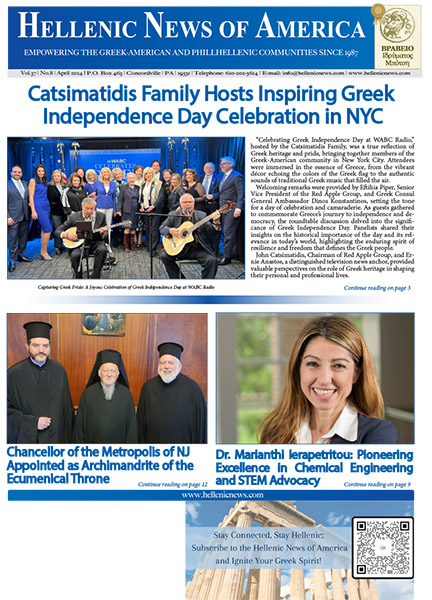
by Marc d’Entremont
It is an undeniable cliché that the Cyclades Islands of Greece are firmly part of the great wonders of the world. Some of Earth’s oldest human settlements are found on the islands. Mountain and seaside villages are classic postcards. Cafes teem with customers lingering for hours over many small plates, wine and coffee. Multi colored fishing boats bob on Aegean Sea water as clear as glass.
Greece may still be troubled with economic and global uncertainty, but tourism is booming – twenty-four million international visitors in 2015. After all, Greek civilization has seen far worse over its many millenniums of glory and conquest. If planning a visit, here are ten highlights not to miss on six of the Cyclades Islands crown jewels.
Ios Island hiking paths and goat cuisine

Donkeys were the main mode of transportation on Greek islands until less than a century ago. That choice was not economic but geographic reality. Most Greek islands are the tops of ancient volcanoes or uplifts from millenniums of tectonic pressure.
To this day donkey paths carved into the sides of hills crisscross most islands. To move goods among island villages, herd goats from one pasture to another or simply get from one’s house to farm fields, these narrow paths were essential. Today they provide hikers with a scenic panorama of island life.
The construction of modern roads for motorized vehicles made most paths redundant but many islands have realized these old trails make ideal hiking paths. The Municipality of Ios with the assistance of the Greek Cultural Mountaineering Club of Fyli have recently restored four paths, fully signposted, connecting Chora with the island’s famous beaches and historic sights creating a comprehensive network of hiking trails. From the ferry terminal at the small picturesque port of Yialos, it’s a short mile and a half taxi ride up the mountain to Chora or a photogenic three quarter mile stroll up the restored ancient Donkey Steps.

On my trip to Ios I enjoyed following old unrestored paths just below the comfortable and scenic Pavezzo Studios and Rooms on the edge of historic Chora. While mesmerized by the panoramic Aegean Sea views, I often shared the paths with the many goats that populate the islands. Goats are still a major source of milk for Greek cheese and meat for many dishes. You can try a savory kid (young) goat burger at Lord Byron or clay pot baked goat with potatoes and wild thyme at Enigma Café.
Santorini: Volcano View Hotel and wine tourism

Whatever photos you’ve ever seen of Santorini can never do justice to reality. The view from my room at the Volcano View Hotel of the small island 700 feet below that’s the top of the still active volcano in the middle of the ancient caldera is a revelation of nature’s supremacy. Yet not to be outdone, the Volcano View Hotel is a human engineering marvel.

The Volcano View Hotel is a luxurious Greek village. The hotel not only clings to the side of the cliff in a dramatic series of descending terraces, gardens and swimming pools but some of the rooms are actually carved into the limestone cliff itself. The irregular walls of my cliff room incorporated boulders that were already in place as design elements and one anchored the television.

The architect molded the hotel to the cliff creating rooms of varying floor plans and some with small efficiency kitchens. Following the flow of the cliff side dictated natural groupings of rooms enhancing the village feel. Yet whether tucked into a turn in the cliff or surrounding one of the many swimming pools, the panoramic views justifiably steal the experience.

There’s evidence that the ancient island of Thira, as Santorini was known four millenniums ago when part of the legendary Minoan civilization, had always been an agricultural powerhouse. Archaeologists unearthing the remarkably preserved ruins of Akrotiri have documented the rich life on this island prior to the massive volcanic explosion that destroyed the first great Greek state. Yet this cataclysmic disaster set in motion a combination of natural forces creating ideal conditions for both tourism and wine.

October 14 – 16, 2016, Santorini will host IMIC2016: International Winetourism Conference. As the most visited of the Cyclades Islands, Santorini produces some of the finest wines in Greece from grape varieties dating back to antiquity, Santorini is an ideal setting. While at the conference, do dine at the incomparable Selene Restaurant. Georgia Tsara, manager and sommelier was recently awarded the Prix au Sommelier 2016 by the International Academy of Gastronomy.
Milos Sailing and the Catacombs

The abundance of valuable minerals as well as a wealth of sea life made Milos a prized and fought over island for over 6,000 years. Numerous caves, inlets and areas accessible only by ship, such as Kleftiko on the southwest tip of the island, gave sanctuary to both residents and pirates. Peaceful today, many areas are still accessible only by boat.

Giovanni and Stelios are no strangers to yachting. The Ferinola family owns Excellent Yachting, one of the Cyclades Islands leading sales and charter companies. Speaking French, English as well as Greek, the brothers’ enthusiasm for their work is obvious in their animated interaction with guests, the detailed information presented and their agility in maneuvering the Mama Maria.
Stelios Farinola studied culinary arts in Athens and prepared lunch on board the Mama Maria. As wild goats peered down from cliff ledges, guests enjoyed Greek salad and pasta with a fresh tomato sauce along with wine, beer and ouzo. No wonder countless legions throughout time have escaped to the serenity of the Cyclades Islands.

Venus de Milo, yes that iconic statue of love, was unearthed on the island. Unfortunately it’s not on the island but in the Louvre Museum in Paris. Yet where it was found is one of the Cyclades Islands most important ancient sites spanning hundreds of years from Greek glory to the height of the Roman Empire. High above the colorful doors of Klima and just below the ancient town of Tripiti, ongoing archaeological excavations are uncovering a vibrant island that in Roman times is estimated to have had a population of over 20,000 – current permanent population of Milos is about 5,000.
A classic Roman theater is undergoing extensive restoration, and the prize for visitors today is the Roman era catacombs. Considered one of the greatest early Christian discoveries, the Milos catacombs provide a fascinating insight into the over three century secret history of one of the world’s great religions. Not just a burial site, the catacombs provided a place of refuge and worship. It’s not creepy; it’s beautiful.
Sifnos pottery and Culinary Festival

At the modern Pottery Workshop Giannis Apostolidis just above the port town of Kamaras, potter/owner/artist Giannis continues an age-old Sifnian craft tradition. Like generations before him, Giannis digs the clay from the same island soil that until just 50 years ago was used by over 600 pottery workshops. Well wrapped, the clay stays fresh for years ready for Giannis to throw into a tsikali, the island’s iconic covered glazed baking dish. Pottery Workshop Giannis Apostolidis designs range from cookware to fanciful art pieces but attention to traditional standards is a given.

On the very windy north side of Sifnos is the tiny seaside fishing village of Cheronisos hugging a crescent beach. The 300-year-old Keramika pottery shop is the oldest workshop on the island. Ioannis Depastas carries on tradition in a shop that alone is an architectural museum piece.
Hanging on the wall is a framed letter from a prestigious American civil engineering professor praising Ioannis for his ingenious designs. For years Ioannis has invented vessels from mugs to jugs that are unseen interior puzzles. Liquid can be poured out of the spout only by holding the vessel in a specific manner individual to the vessel’s design or else the result is water spilling out from hidden openings. The professor uses Ioannis Depastas’ designs in engineering lectures.

Don’t miss the annual Nikolaos Tselementes Cycladic Gastronomy Festival on September 8 – 10, 2016. Sifnos native Nikolaos Tselementes (1878-1958) was the most celebrated Greek chef of the first half of the 20th century. His international stature, cookbooks and Athens culinary school elevated Greek cuisine from the home kitchen to prominent restaurants and inspired generations of chefs to expand Greek culinary horizons. The three day festival – 6:00 p.m. to 11:30 p.m. – highlights both traditional and modern Greek cuisine. Best of all, the festival and its food is free to all.
Kythnos hospitality

On the tiny island of Kythnos I finally understood why everyone in Greece was showering me with gifts. It’s simply what Greeks do. To not offer hospitality to a visitor is simply unthinkable.
Mrs. Annezio Bouritis and her son Mixαlis Famelitis own Annezio Bakery. Set in a typical white washed stone building high above Merichas harbor the cars of customers are usually double parked on the narrow street. Like so many Greek bakeries, patrons rarely just run in and leave. Scattered tables and chairs invite one to have a coffee and chat awhile.

Annezio Bakery is particularly known for traditional sweets such as pasteli, a honey and sesame seed confection that’s beloved in Greece and has origins in antiquity among the many cultures that lay upon the fabled Spice Route through Asia and the eastern Mediterranean. Savory and sweet cheese tarts are ubiquitous throughout the Cyclades Islands and go by many names. On Kythnos the simple cheese tart called Thermiotikes can be eaten at anytime of the day. Despite the fact that fresh dill is an ingredient, the addition of sugar turns the recipe into a sweet that goes well with coffee. Omitting the sugar turns the tart into a savory starter for lunch or dinner. Unfortunately, if you arrive too late in the day, they may be sold out.
Paros: the island of churches

An estimated 400 chapels, churches and monasteries have earned Paros the moniker “island of churches.” Many small chapels are built and maintained by families in honor of their loved ones and dot both countryside and backyards. Hotels frequently have chapels available for weddings and traditional events.

The Monastery of Panagia Ekatontapiliani (Virgin Mary of the Hundred Doors) in Parikia dates from the 4th century. Roman Emperor Constantine constructed the monastery upon the wishes of his mother Saint Helene. Having taken shelter on Paros during a storm on her way to the Holy Lands in search of the true cross, St. Helene had asked the Virgin Mary for success in her quest.
A superb example of Romanesque architecture, the brick and stone building is one of the earliest Christian churches on the islands and ranks among the oldest in continuous use in the world. Design elements range from repurposed ancient marble columns, a simple 4th century Romanesque stone baptistery, vibrant Byzantine frescoes to the imperial crest of Constantinople incised in marble under the horos.
When you go:

The Cyclades Islands are well connected from Piraeus, the port of Athens, and among the islands by ferry service. The ships of Blue Star Line were some of the finest ferries I’ve enjoyed, almost cruise ship quality in comfort. Ticket prices are more than reasonable.
Travel with Pen and Palate to Greece and the world with Marc d’Entremont every month in the Hellenic News of America.

URL links to island highlights
Hiking trails on Ios: https://ios.gr/english/tourist-guide/activities/
Pavezzo Studios & Rooms, Ios: https://www.iospavezzo.com/
IMIC2016 Conference, Santorini: https://imic2016.conferences.gr/en/
Volcano View Hotel, Santorini: https://www.volcano-view.com/
Selene Restautrant, Santorini: https://www.selene.gr/about.aspx
Mama Maria, (Excellent Yachting) Milos: https://www.excellentyachting.com/en/charter-a-yacht/sailing-yachts/skippered
Catacombs of Milos: https://www.catacombs.gr/
Pottery Workshop Giannis Apostolidis, Sifnos: https://apostolidis-ceramics.gr/en/shops.php
Keramika pottery shop, Sifnos: https://hellenicnews.com/tradition-crafts-21st-century-sifnos/
Nikolaos Tselementes Cycladic Gastronomy Festival, Sifnos: https://sifnos.e-sifnos.com/what-to-do-in-sifnos/cooking-festival-in-sifnos.php
Annezio Bakery, Kythnos: https://www.4ty.gr/merchant/18716/en/ANNEZIO%20-%20PASTRY%20KYTHNOS%20%E2%80%93%20LARENTZAKI%20ANNEZIO
Monastery of Panagia Ekatontapiliani: https://www.paros.gr/en/what-to-do/shmeia-endiaferontos/churches-monasteries/531-parikia.html
Blue Star Line: https://www.ferries.gr/bluestarferries/
Travel with Pen and Palate: https://travelpenandpalate.com/





